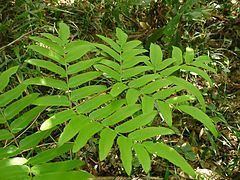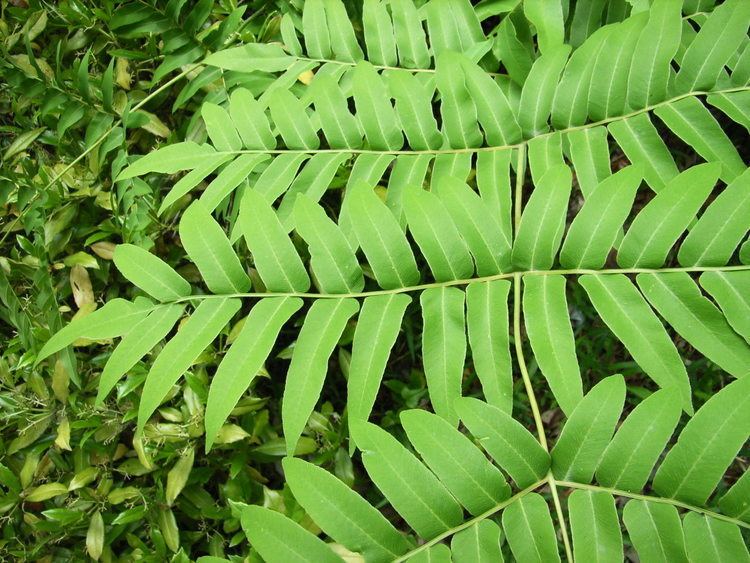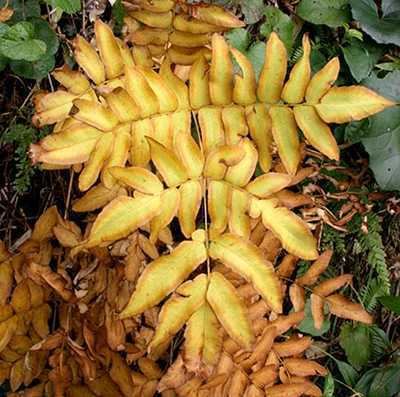Order Osmundales Scientific name Osmunda japonica Rank Species | Division Pteridophyta Section Euosmunda Higher classification Osmunda | |
 | ||
Similar Pteridium aquilinum var latius, Ostrich Fern, Fuki, Aralia cordata, Japanese angelica tree | ||
Osmunda japonica top 7 facts
Osmunda japonica (Japanese royal fern or Japanese flowering fern; syn. Osmunda nipponica ), also called Asian royal fern is a fern in the genus Osmunda native to east Asia, including Japan, China, Korea, Taiwan, and the far east of Russia on Sakhalin.

It is a deciduous herbaceous plant which produces separate fertile and sterile fronds. The sterile fronds are spreading, up to 80–100 cm tall, bipinnate, with pinnae 20–30 cm long and pinnules 4–6 cm long and 1.5–2 cm broad; the fertile fronds are erect and shorter, 20–50 cm tall.

It grows in moist woodlands and can tolerate open sunlight only if in very wet soil. Like other ferns, it has no flowers, but rather elaborate sporangia, that very superficially might suggest a flower, from which the alternative name derives.

Like its relative Osmundastrum cinnamomeum (Cinnamon fern), the fertile fronds become brown-colored and contain spores. The sterile (vegetative) fronds resemble in form, another relative, Osmunda regalis (Royal fern).

In some parts of China (where it is called 蕨菜 or juecai in Mandarin), Tibet and Japan (where it is called zenmai in Japanese), the young frond of Osmunda japonica is used as a vegetable.

